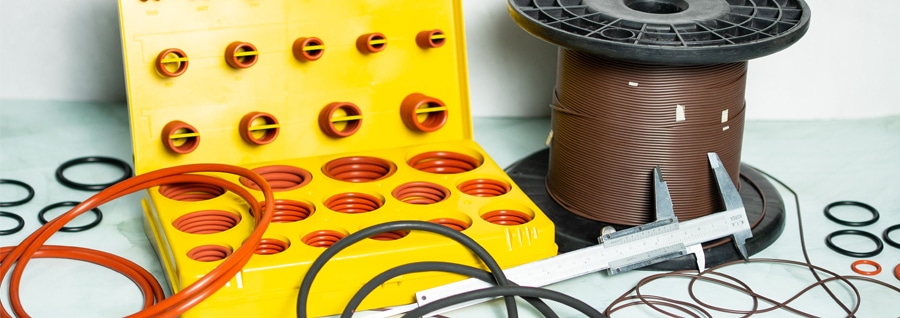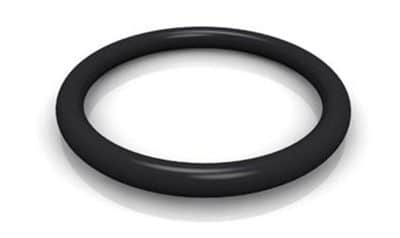
WHAT ARE O-RING?
An O-ring is a doughnut-shaped object or torus. The opposite sides of an O-ring are squeezed between the walls of the cavity or “gland” into which the O-ring is installed. The resulting zero clearance within the gland provides an effective seal, blocking the flow of liquids or gases through the gland’s internal passage. An O-ring is defined by its dimensions (based on inside [hole] diameter and cross section), durometer (Shore A hardness), and material composition. Illustration 3.1 demonstrates three applications showing the two basic categories of O-rings: STATIC– contained within a non-moving gland as in a face seal, and DYNAMIC– contained within a moving gland as in a piston or rod seal.

O-RING APPLICATIONS
Transportation
In industries like passenger automotive, heavy duty trucking, and aerospace, severe conditions call for high performance products. Chemical exposure, extreme temperatures and vibration are all factors that affect elastomer selection for O-Rings. Custom compounds have been produced to meet strict OEM and Tier 1 specifications and are continually refined to adhere to biofuel and emissions requirements.
Medical
In the medical field syringe, pump, filtration and connectors require specialty FDA grade O-Rings.
Oil, Gas & Industrial
Valves, gas pumps, fittings, dispensers and storage tanks need sealing solutions that can withstand extreme temperatures, noxious chemicals, and high compression. Specialty compounds like peroxide and triazine-cured perfluoroelastomers assure heat and chemical resistance.
Electronics
Semiconductor processing and dust protection in consumer electronics call for O-Rings to be manufactured in clean environments. Particulate and contaminant-free O-Rings are available in a wide range of compounds.
Food & Beverage
Specialty 3A sanitary, NSF-61 and water service O-Rings and seals are ideal for the food processing, beverage dispensing and water filtration markets.
